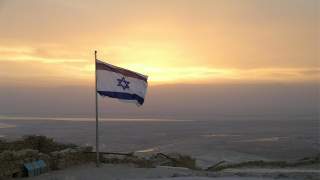Why Israel Can't Afford to Destroy Hamas
Destroying Hamas would require Israel to make a large-scale and prolonged ground incursion into the Gaza Strip.
At the same time, steady progress by Israel on the military front are improving the prospects for a more controlled management of a future military operation. Specifically, Israel is starting the construction a concrete subterranean wall around Gaza and a sophisticated sensor-based fence above ground. When complete, this obstacle could dramatically diminish the threat of underground infiltration into Israel from Gaza. The subterranean wall, if effective, could neutralize one of the major strategic threats planned by Hamas for the next round of hostilities and preclude the necessity for a ground operation to uncover and destroy the tunnels.
In addition, Israel continues to enhance and expand its Iron Dome air-defense system. The improved capability to intercept rockets launched from Gaza counterbalances another central tenet in Hamas’ operational strategy, providing growing protection to Israel’s home front.
These elements—together with increased countermeasures against incursions from the sea or the use of unmanned aerial vehicles—can circumvent the major pillars of Hamas’ plans for the next round of hostilities, narrowing its options to the firing of rockets and mortars against Israel from within the confines of Gaza. In this kind of military confrontation, Israel has overwhelming advantages.
Its air force can operate almost freely, combining intelligence and precise munitions to hit targets. While daily life in Gaza would grind to a halt, in Israel life could continue under relevant precautions. Hamas would need to provide explanations to the population for the worsening humanitarian situation with little-to-no gains to show for their suffering.
Conversely, a large-scale ground incursion into Gaza reduces Israel’s advantages and increases those of Hamas. The intricate maze of tunnels combined with the advantages of utilizing guerilla-like tactics on the home turf would take a growing toll on the Israeli Defense Forces, undermining the resilience and support of Israeli society. The ensuing humanitarian crisis caused by a large-scale ground incursion would place the onus squarely on Israel’s shoulders.
Implications and Policy Recommendations
Israel should presently aim to postpone any renewal of major hostilities until the completion of its subterranean-and-sensor project around the Gaza Strip. Improving the humanitarian situation and investing in renewing Gaza’s deteriorating civilian infrastructure may help to put off the eruption of a new round of fighting. In the interim, a viable exit strategy, that does not rely on the continued governance of Hamas, can be looked at and developed.
In the absence of any predetermined substitute, destroying Hamas is not an end-state that effectively serves Israel’s strategic objectives. At present, these would be better served by a subdued and a deterred Hamas, able to govern Gaza and to subject the other armed elements to its will.
Thus, it is not clear whether Liberman’s threat to destroy Hamas in the next round of hostilities represents a definitive policy decision or if it is rhetoric designed to deter the organization. Either way, the lack of concrete alternatives to Hamas’ governance undermines the value of implementing such a decision as well as reduces its merit as a credible deterrent threat.
In the next round of hostilities, a large-scale ground incursion into Gaza without a developed exit strategy is bound to be counterproductive. Preferably, a maturing of Israel’s abilities to counter the major elements of Hamas’ operational strategy will enable the country to adopt a strategy based on attrition and denial. This will enable Israel to advance, at a reasonable cost, the political objectives of achieving a prolonged ceasefire and shield the country from the burden of responsibility that comes with Gaza falling.
Shimon Arad is a retired colonel from the Israeli Defense Forces. His last position (2011–16), was head of the Strategic Planning Unit in the Political-Military and Policy Bureau of the Israeli Ministry of Defense. Beforehand, he served in numerous positions in the J2, J3 and J5, dealing with military, regional and international strategy issues.
Image: An Israeli flag flies at sunset. Pixabay

